Yes, you can substitute dried rosemary for fresh rosemary in recipes. The standard substitution ratio is 1 teaspoon of dried rosemary for every 1 tablespoon of fresh rosemary (1:3 ratio). Dried rosemary is more concentrated due to moisture loss, so using less prevents overpowering your dish. Here's how to get the best results.
Table of Contents
- Substitution Ratio Explained
- Flavor Comparison: Fresh vs. Dry Rosemary
- Practical Cooking Tips for Substituting Rosemary
- Best Dry Rosemary Brands & Alternatives
- Buying Guide: Choosing the Right Dried Rosemary
- Frequently Asked Questions
- Conclusion
Substitution Ratio Explained
The 1:3 ratio (1 part dried to 3 parts fresh) exists because drying removes water content while concentrating flavor compounds. Fresh rosemary is about 80-85% water, so dried rosemary packs significantly more flavor per volume. Using equal amounts would make dishes bitter or medicinal.
For example:
- If a recipe calls for 1 tablespoon fresh rosemary, use 1 teaspoon dried rosemary
- If a recipe calls for 1 sprig fresh rosemary, use 1/2 teaspoon dried rosemary
| Characteristic | Fresh Rosemary | Dried Rosemary |
|---|---|---|
| Flavor Intensity | Mild to moderate | Stronger, more concentrated |
| Aroma | Fragrant, herbal, pine-like | Earthy, woodsy |
| Shelf Life | 3–5 days refrigerated | 6–12 months sealed |
| Best For | Garnishes, finishing dishes, light cooking | Slow-cooked dishes, marinades, baked goods |
Flavor Comparison: Fresh vs. Dry Rosemary
The most noticeable difference between fresh and dried rosemary lies in their flavor profiles:
- Fresh Rosemary: Has a bright, floral, and slightly citrusy note with a strong aromatic presence. Its oils are volatile, meaning they dissipate quickly once chopped or crushed.
- Dried Rosemary: Offers a more muted, woody flavor with less fragrance. The drying process removes much of the essential oils, leaving behind a more concentrated, earthy taste.
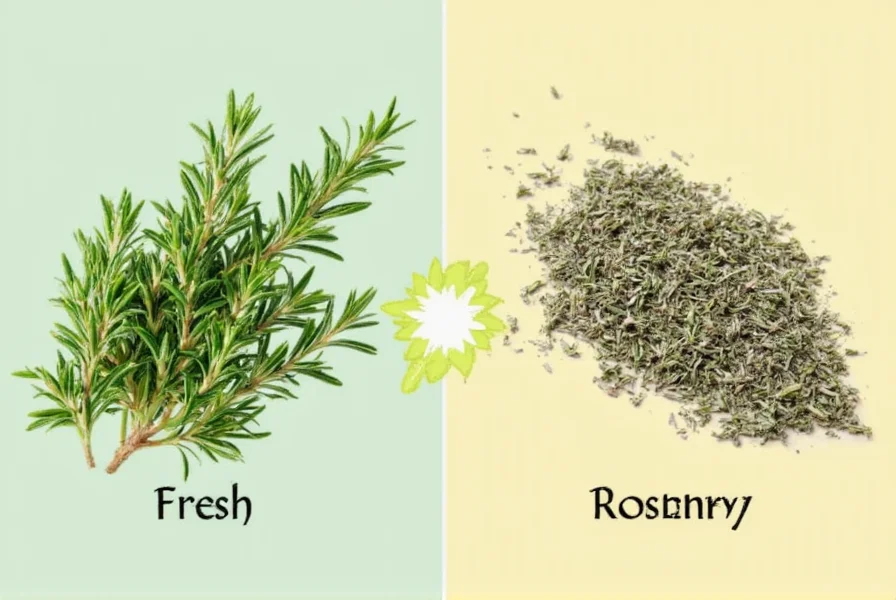
Practical Cooking Tips for Substituting Rosemary
Whether you're baking focaccia or roasting a leg of lamb, these tips will help you get the most from using dried rosemary as a substitute:
- Grind it before use: Crushing or grinding dried rosemary releases more flavor. A mortar and pestle work great, or you can rub it between your fingers.
- Add early in cooking: Unlike fresh rosemary, which can be added at the end for brightness, dried rosemary should go in earlier to allow flavors to infuse.
- Soak it (optional): If you want to mimic fresh rosemary texture, briefly soak dried rosemary in warm water or broth before adding it to the dish.
- Don't overdo it: Less is more. Start with a small amount and adjust after tasting.
- Pair wisely: Dried rosemary works best with hearty ingredients like root vegetables, game meats, or robust grains.
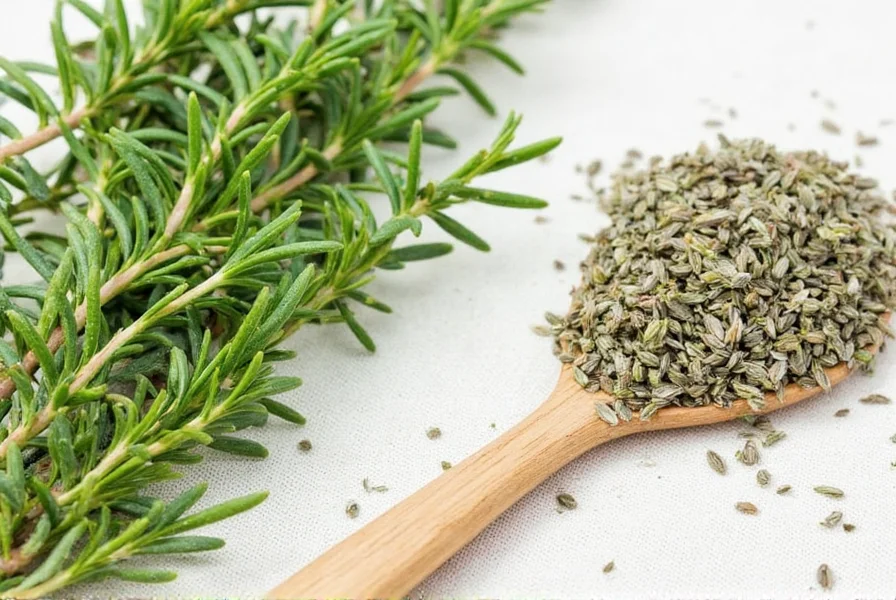
Best Dry Rosemary Brands & Alternatives
When selecting dried rosemary, consider these reputable options based on flavor consistency and sourcing quality:
1. McCormick Culinary Grade Dried Rosemary
- Features: Sourced from premium farms, fine cut, consistent color and texture.
- Advantages: Ideal for commercial kitchens and serious home cooks.
- Use Cases: Roasts, soups, and sauces where deep flavor is desired.
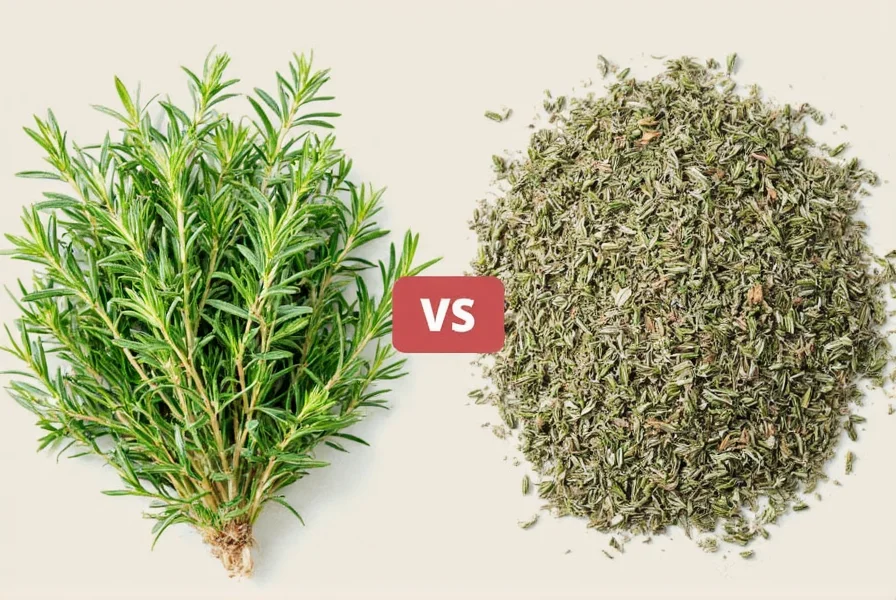
2. Simply Organic Dried Rosemary
- Features: USDA certified organic, no additives or preservatives.
- Advantages: Great for health-conscious cooks or eco-minded buyers.
- Use Cases: Vegan recipes, organic meals, and slow-cooked vegetarian stews.
3. Frontier Co-op Bulk Dried Rosemary
- Features: Affordable, available in bulk, sustainably sourced.
- Advantages: Cost-effective and flexible for large-scale use.
- Use Cases: Stocking up for winter cooking, holiday baking, or restaurant use.
Buying Guide: Choosing the Right Dried Rosemary
Not all dried rosemary is created equal. Here's how to pick the best one for your needs:
1. Whole Leaf vs. Ground
- Whole Leaf: Retains more flavor longer. Better for long-term storage and infusion-based dishes.
- Ground: Easier to blend into doughs, pastes, and rubs. Use for immediate flavor impact.
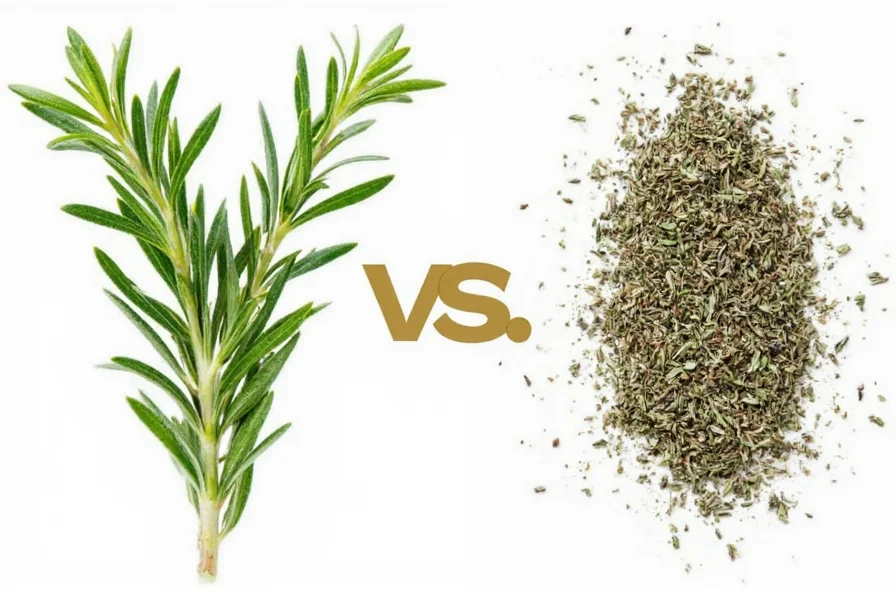
2. Packaging
- Look for opaque containers or resealable bags to protect against light and air exposure.
- Airtight jars are ideal for home use.
3. Certification
- Opt for organic or non-GMO verified options if purity is a concern.
- Certified brands often undergo stricter quality controls.
4. Color and Smell
- Fresh-looking dried rosemary should still have some green hue, not completely brown.
- If it smells musty or bland, it's likely old and should be replaced.
Frequently Asked Questions
Can I substitute dry rosemary for fresh rosemary in recipes?
Yes, you can substitute dried rosemary for fresh rosemary. The standard ratio is 1 teaspoon of dried rosemary for every 1 tablespoon of fresh rosemary (1:3 ratio). Dried herbs are more concentrated due to moisture removal, so using less prevents overpowering your dish.
Why is the substitution ratio 1:3 for dried to fresh rosemary?
The 1:3 ratio exists because the drying process removes water content while concentrating the essential oils and flavor compounds. Fresh rosemary is about 80-85% water, so when dried, the same volume contains much more concentrated flavor. Using equal amounts would result in an overly strong, potentially bitter dish.
What happens if I use too much dried rosemary?
Using too much dried rosemary can easily overpower a dish. Dried rosemary has a more concentrated, woody flavor that can become bitter or medicinal if used in excess. Since rosemary is naturally quite strong, it's best to start with less (following the 1:3 ratio) and adjust after tasting. You can always add more, but you can't remove it once added.
Can I make dried rosemary taste more like fresh rosemary?
While you can't perfectly replicate fresh rosemary's bright, floral notes with dried, there are techniques to improve results. Try briefly soaking dried rosemary in warm water or broth for 10-15 minutes before using it. Alternatively, crush the dried rosemary thoroughly between your fingers before adding it to release more oils. Adding it earlier in the cooking process also helps the flavors integrate better.
Which dishes work best with dried rosemary instead of fresh?
Dried rosemary works best in slow-cooked dishes where it has time to rehydrate and release its flavors, such as stews, braises, soups, and roasted meats. It's also excellent in baked goods like breads and focaccia. However, for dishes where fresh rosemary is used as a garnish or added at the end for bright flavor (like in some salads or finished dishes), dried rosemary isn't an ideal substitute because it lacks the same aromatic quality.
Conclusion
Yes, dried rosemary can absolutely substitute fresh rosemary when used correctly. Remember the 1:3 ratio (1 teaspoon dried for 1 tablespoon fresh), crush it before use, and add it early in cooking for best results. While fresh rosemary brings a vibrant aroma that dried can't fully replicate, properly substituted dried rosemary delivers consistent flavor in slow-cooked dishes and baked goods. Always start with less and adjust to taste for perfect results every time.
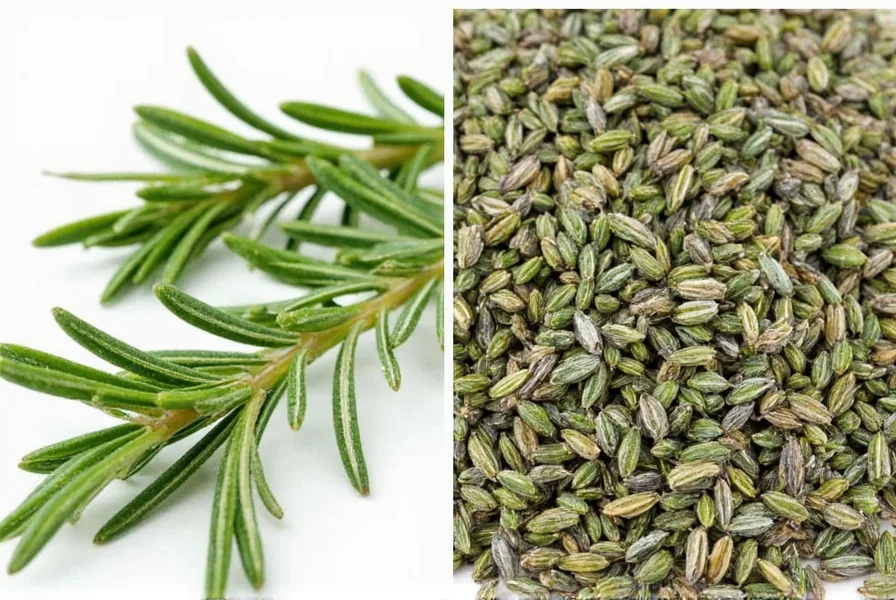

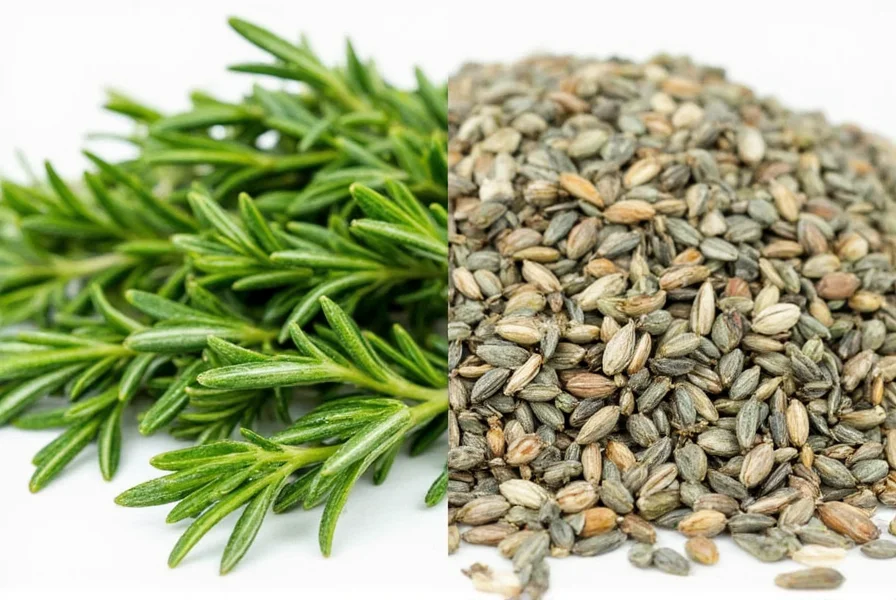









 浙公网安备
33010002000092号
浙公网安备
33010002000092号 浙B2-20120091-4
浙B2-20120091-4